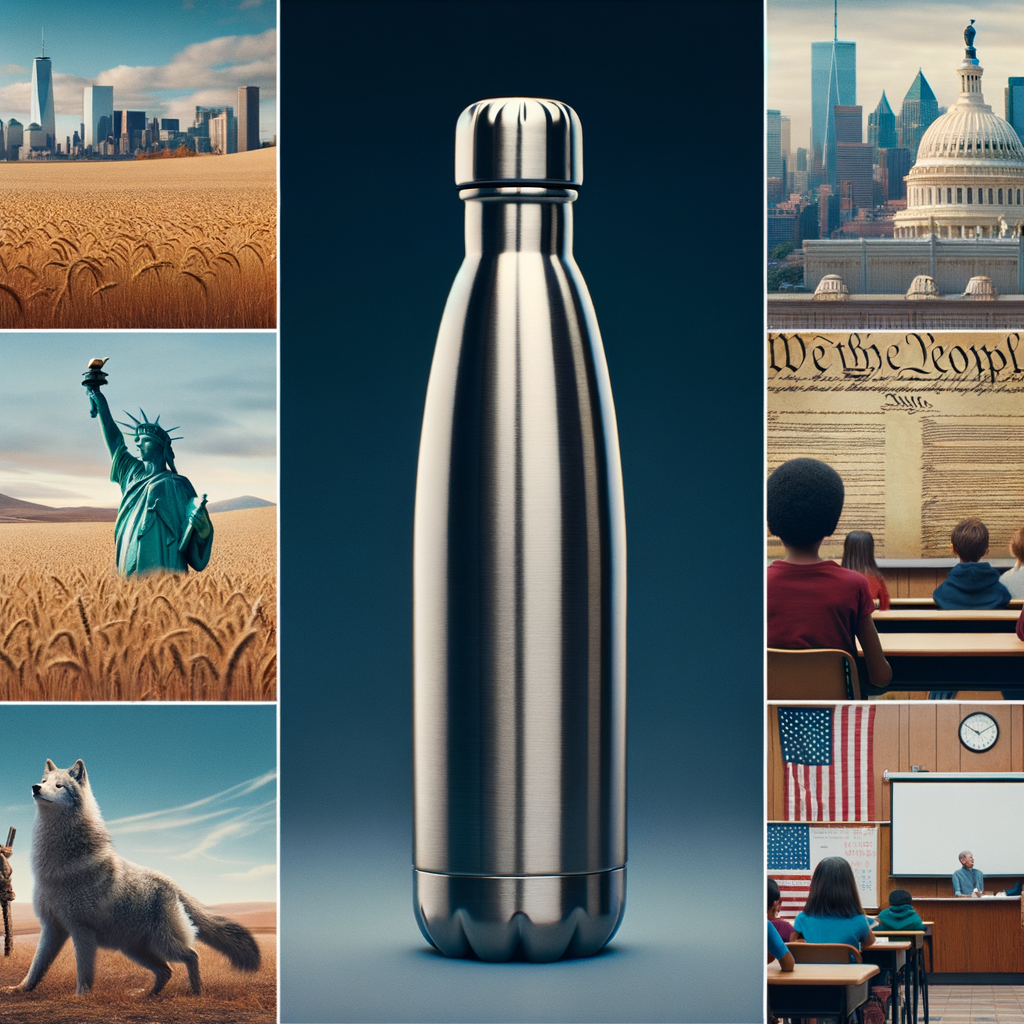The Stanley Water Bottle Controversy: A Microcosm of American Consumerism and Waste
The Problematic $45 Stanley Water Bottle: A Reflection of America’s Issues
In the vast landscape of American consumerism, a seemingly innocuous item has bubbled to the surface, encapsulating the complexities of our cultural ethos. The Stanley water bottle, a $45 vessel designed to keep beverages at their desired temperatures, has become a flashpoint in the ongoing conversation about consumption, waste, and value. This controversy is not just about a water bottle; it’s a reflection of the broader issues that permeate American society.
At first glance, the Stanley water bottle appears to be a triumph of marketing and design. Its sleek, durable construction and promise of thermal regulation have made it a coveted item among outdoor enthusiasts and urban commuters alike. However, beneath its shiny exterior lies a deeper narrative about the way we consume and the implications of our purchasing decisions.
The fervor surrounding this water bottle is indicative of a culture that often equates higher prices with superior quality. Consumers are willing to invest in a product that signals a certain lifestyle or status, even if alternatives at a fraction of the cost could serve the same function. This mindset is not inherently problematic, but it does raise questions about the value we place on material goods and the ways in which we seek to express our identities through them.
Moreover, the Stanley water bottle saga highlights the issue of waste in American society. While reusable water bottles are an environmentally friendly alternative to disposable plastic ones, the production and distribution of high-end items like these come with their own ecological footprint. The energy and resources required to manufacture, package, and ship these bottles across the country contribute to the very environmental degradation that such products aim to combat.
Yet, there is an optimistic undercurrent to this tale. The popularity of the Stanley water bottle suggests a growing awareness of the importance of sustainability. People are increasingly seeking out products that are not only functional but also environmentally responsible. This shift in consumer behavior is a promising sign that attitudes towards waste and disposability are evolving.
Furthermore, the debate over the Stanley water bottle has sparked a broader dialogue about consumerism and its impact on society. It has prompted individuals to reflect on their own purchasing habits and consider the long-term effects of their choices. As consumers become more conscious of these issues, there is potential for a ripple effect that could lead to more sustainable practices across various industries.
In essence, the Stanley water bottle controversy serves as a microcosm of American consumerism and waste. It encapsulates the tension between our desire for quality and our responsibility to the planet. While the discourse may center on a single product, it opens the door to a larger conversation about how we can balance our consumption with our commitment to environmental stewardship.
As we navigate these complex issues, it is crucial to maintain an optimistic outlook. Change is possible, and it often starts with small, individual actions that collectively lead to significant shifts. By examining the implications of our consumer choices and striving to make more informed decisions, we can work towards a future that is both prosperous and sustainable. The Stanley water bottle, with all its controversy, reminds us that even the most mundane objects can be catalysts for reflection and, ultimately, transformation.
From Hype to Backlash: The Stanley Water Bottle and America’s Culture of Excess
The Problematic $45 Stanley Water Bottle: A Reflection of America’s Issues
In the vast landscape of consumer goods, few items have sparked as much debate as the $45 Stanley water bottle. This seemingly innocuous vessel for hydration has become a lightning rod for discussions about America’s culture of excess and the complex interplay between consumer demand and sustainability. As we delve into the story of the Stanley water bottle, it’s essential to understand that it is more than just a container; it’s a mirror reflecting the broader societal issues that we grapple with daily.
Initially, the Stanley water bottle rode the crest of a wave of popularity, fueled by social media influencers and a growing public consciousness about the importance of staying hydrated. Its sleek design, coupled with a reputation for durability, made it a must-have accessory for the wellness-focused and environmentally conscious. However, the hype surrounding the bottle soon gave way to a backlash as consumers began to question whether its high price tag was justified and what its popularity said about our collective values.
The Stanley water bottle phenomenon is emblematic of a larger trend in American consumer culture: the allure of exclusivity and the premiumization of everyday items. In a society where status is often signaled through possessions, products like the Stanley water bottle become more than just practical tools; they are symbols of identity and belonging. This desire for distinction drives people to invest in high-priced items, sometimes at the expense of practicality or necessity.
Yet, the conversation around the Stanley water bottle is not all negative. The controversy has sparked a broader dialogue about the importance of conscious consumerism and the impact of our purchasing decisions on the environment. The bottle’s durability and reusability are points in its favor, aligning with a growing movement towards reducing single-use plastics and promoting sustainable living practices. In this light, the investment in a higher-priced, long-lasting water bottle could be seen as a step towards a more eco-friendly lifestyle.
Moreover, the backlash against the Stanley water bottle has prompted introspection about the ways in which we assign value to products. It has encouraged consumers to think critically about marketing, branding, and the true cost of goods. This scrutiny is a positive development, as it fosters a more informed and discerning consumer base that prioritizes quality and sustainability over hype and status.
In the end, the Stanley water bottle saga is a microcosm of America’s broader cultural issues. It highlights the tension between consumerism and sustainability, the pursuit of status, and the quest for authenticity. As we move forward, it’s crucial to harness the optimism that arises from this debate. By learning from the discussions around products like the Stanley water bottle, we can work towards a future where consumer choices are driven by informed, ethical considerations rather than the fleeting allure of trends.
The Stanley water bottle’s journey from hype to backlash is a reminder that our everyday purchases are more than transactions; they are votes for the kind of world we want to live in. As consumers, we have the power to shape that world through our actions and decisions. By choosing wisely and thoughtfully, we can contribute to a culture that values sustainability, quality, and social responsibility over excess and superficiality. The Stanley water bottle may just be one piece of the puzzle, but it’s a telling one, offering insights into the challenges we face and the opportunities we have to create positive change.







